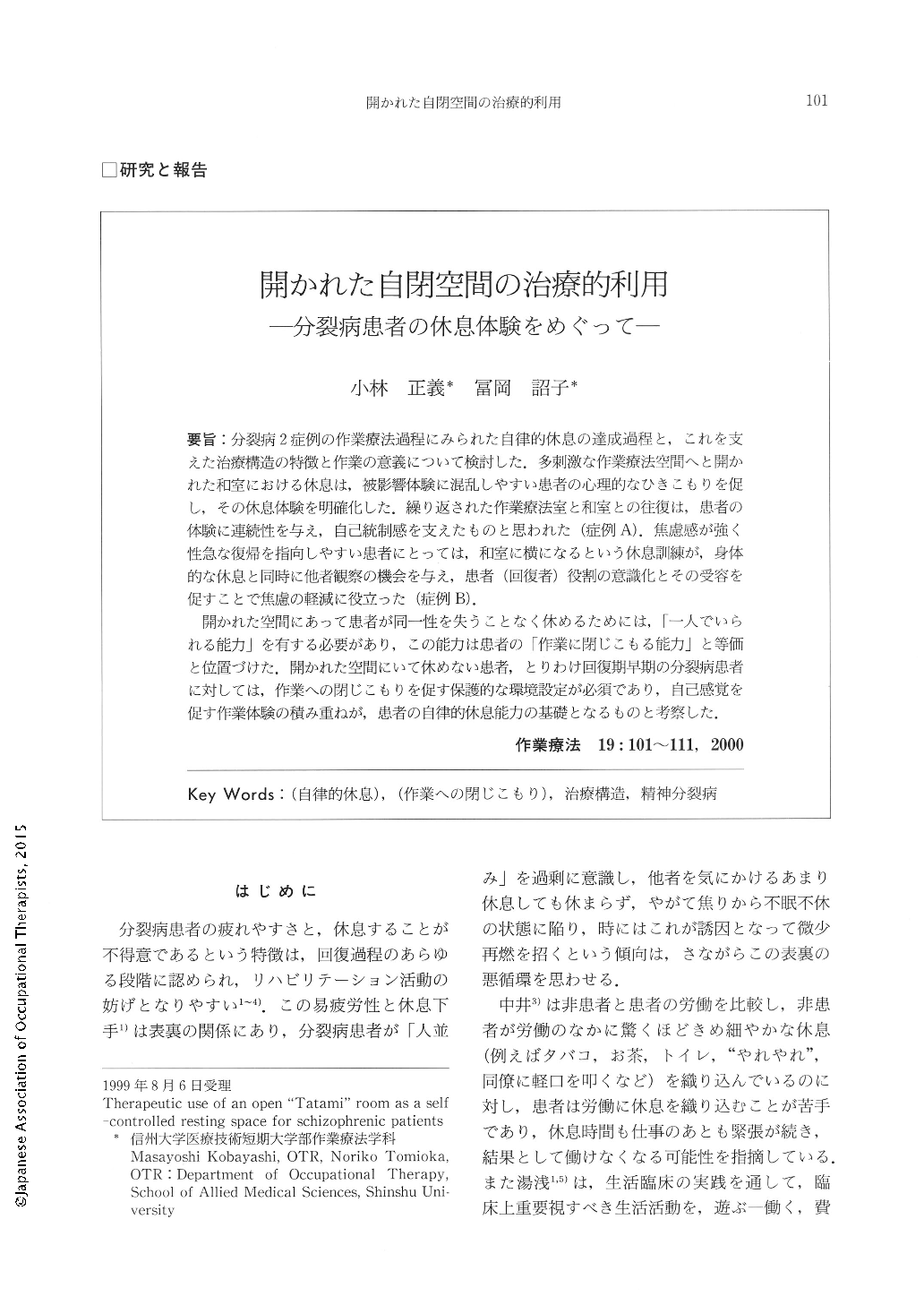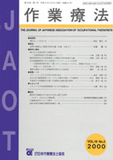Japanese
English
- 販売していません
- Abstract 文献概要
- 1ページ目 Look Inside
- 参考文献 Reference
- サイト内被引用 Cited by
要旨:分裂病2症例の作業療法過程にみられた自律的休息の達成過程と,これを支えた治療構造の特徴と作業の意義について検討した.多刺激な作業療法空間へと開かれた和室における休息は,被影響体験に混乱しやすい患者の心理的なひきこもりを促し,その休息体験を明確化した.繰り返された作業療法室と和室との往復は,患者の体験に連続性を与え,自己統制感を支えたものと思われた(症例A).焦慮感が強く性急な復帰を指向しやすい患者にとっては,和室に横になるという休息訓練が,身体的な休息と同時に他者観察の機会を与え,患者(回復者)役割の意識化とその受容を促すことで焦慮の軽減に役立った(症例B).
開かれた空間にあって患者が同一性を失うことなく休めるためには,「一人でいられる能力」を有する必要があり,この能力は患者の「作業に閉じこもる能力」と等価と位置づけた.開かれた空間にいて休めない患者,とりわけ回復期早期の分裂病患者に対しては,作業への閉じこもりを促す保護的な環境設定が必須であり,自己感覚を促す作業体験の積み重ねが,患者の自律的休息能力の基礎となるものと考察した.
The purpose of this paper is to discuss the therapeutic use of an open "Tatami" room as a selfcontrolled resting space for schizophrenic patients. A physical structure of occupational therapy in Shinshu University Hospital provides a unique setting for services to all patients referred to from internal, surgical, neurological, orthopedic and psychiatric sections. A Japanese "Tatami" room (sized 22.7m2) as a part of a multi purpose training room (sized 217m2) is used for training in transfer and self -care activities, and as a resting space for psychiatric patients. Two case studies of schizophrenic patients were briefly presented and discussed to illustrate the progressive processes of ego autonomy, as a result of a resting experience in this "Tatami" room, which had been carefully planned and managed as a part of a total occupational therapy program. The following are significant results of the therapeutic uses of an open "Tatami" room with schizophrenic patients needing support in their recovery process.
1. A physical retreat to "Tatami" space in a supportive and holding occupational therapy environment can facilitate a patient's psychic retreats and clarify his experiences as resting in a more adaptive and ego-supportive way.
2. The open structure of the "Tatami" room enabled the patients' physical and psychological mobility between two spaces. This self-initiated mobility supported a feeling of continuity in experience and objective constancy, which facilitated the patients' sense of self-control.
3. Planned "resting exercise" seemed to provide a chance to observe other patients' programs, which conveyed a distinct message of a patient's role in the slow recovery process. These messages seemed to support his self-confrontation.
4. The "capacity to be alone", defined by Winnicott (1958), provides a basic ground for adaptive resting function in the presence of others. This capacity can be equated to the "capacity to be self-occupied" in doing.

Copyright © 2000, Japanese Association of Occupational Therapists. All rights reserved.


